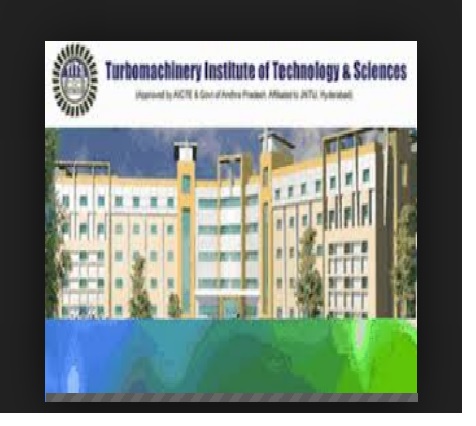Software Engineering B.Tech Question Bank : tits.ac.in
Name of the College : Turbomachinery Institute of Technology &Sciences (TITS)
University : JNTU Hyderabad
Department : Computer Science Engineering
Subject Name : Software Engineering
Degree : B.Tech
Year/Sem : III/I
Website : tits.ac.in
Document Type : Question Bank
Download Model Question Paper : https://www.pdfquestion.in/uploads/tits.ac.in/3064-seqb.pdf
TITS Software Engineering Question Bank
UNIT – I
1. Explain about different software myths? (Nov/Dec 09)
2. How the characteristics of software contrast with the characteristics of hardware? (Nov ’10 set 3)
Related : Turbomachinery Institute of Technology &Sciences Operating Systems B.Tech Question Bank : www.pdfquestion.in/3061.html
3. Explain the role of Software and changing nature of Software? (Nov’10 set No.1)
4. What is CMM? Discuss how various maturity levels of CMM can be measured? (May’11 Set No. 2)
5. What is a software process? What are the generic framework activities those are present in every software process? ( May/June ’09 Set No. 3)
6. Software is engineered, not manufactured, justify your answer. Give challenges of software engineer.(May/Jun ’09 Set No.4)
7. Discuss the importance of software engineering. And also discuss about software myths.(Dec’11 set 4)

UNIT – II
1. Describe about spiral model with neat diagram. Give advantages ( May’11 set No. 3)
2. Describe concurrent development model and provide three examples for fourth generation techniques.(May’11 set No.1)
3. How is software requirements document prepared? ( May’10 set No.2)
4. What are the advantages of developing a prototyping? What the problems involved?( May’09 set- 4)
5. What is water fall model? How is it different from other engineering process model? ( Nov’10 set- 1)
6. Illustrate on RAD process model ( Dec’11 set No.3)
7. Explain the Function oriented metrics with a suitable example (Dec’11 set 2)
UNIT – III
1. What is meant by SQA? Discuss in detail SQA activities.( May’09 set No. 1)
2. Discuss how feasibility studies are conducted. ( Dec’11 set No. 4)
3. Why requirements elicitation and analysis is a difficult process? ( Nov ’09 set No. 3)
4. Discuss the risk analysis and management template. ( May‘11 set No. 2)
5. Discuss how to asses correctness, Maintainability, and Integrity of a software. ( Jun’10 set No. 4)
UNIT – IV
1. What are the steps required to build an ER diagram? Explain? ( May’11 set No. 1)
2. What is difference between cardinality and modularity and refinement ( Nov’10 set No. 2)
3. What is the primary object of architectural design and mention the importance of architectural design?(May’11 set-2)
4. Name some architectural styles and explain ( Nov/Dec’09 set No.3)
5. How do we assess the quality of a design?( May’11 set No. 2)
6. What is meant by object-orientated design? Discuss its advantages and steps in OOD.(Dec’11 set 1)
UNIT – V
1. What are the steps of the system design process? ( May’11 set No. 1)
2. What is the design activities related to each of system design process steps? ( Nov ‘10 set No. 4)
3. Explain about user interface design? Explain issues ( Nov’09 set No. 3)
4. Explain about object oriented design process? What is meant by object and object process? ( May’10 set No.2)
5. Define number of design principles that allow the user to maintain control in interface design.( Dec’11 set No. 3)
6. Discuss the user interface design guidelines and user interface standards. (Dec’11 set 2)
UNIT – VI
1. What is meant by software quality and explain. ( May’11 set No. 2)
2. What is meant by black box testing? Explain graph based testing method with example. ( Dec’11 set No. 1)
3. What is meant by white box testing? ( Dec’11 set No. 2)
4. Who should perform the validation testing? What are the general characteristics of software testing? Explain about validation testing. ( May’11 set No.4)
5. What is overall strategy for software testing? Explain ( Dec’11 set No. 1)
6. Discuss about ISO 9126 quality factor. ( May’11 set No. 3)
7. What is meant by BVA? Discuss the guide lines to create BVA test cases? Discuss about software tools for test case design. ( May’11 set No. 4)
8. State and explain various Black- box and White- box testing methods.(Dec’11 set 1)
UNIT – VII
1. What is meant by defect amplification? How can defect amplification model be used to illustrate the generation and detection of errors during design and coding steps? ( Dec’11 set No. 2)
2. Define the components of risks? How do we assess the consequences of risks? ( May’11 set No. 1)
3. Explain about the size oriented metrics? ( May’11 set No. 4)
4. Explain about RMMM plan? ( Dec’11 set No. 2)
5. What is meant by risk table? How to develop the risk table. ( May’11 set No. 3)
6. Explain about risk protection? ( Dec’11 set No. 1)
7. Describe a formal approach to SQA? ( Nov’10 set No. 2)
8. Discuss the relationship between lines of code and function points? ( May’11 set No. 4)
9. What is a software project risk? Explain about risk identification and analysis in detail. (Dec’11set 4)
UNIT – VIII
1. Explain about software reliability, ISO 9000 quality standards and SQA Activities. ( Dec’11 set No. 2)
2. What is meant by FTR? Discuss about review reporting and record keeping? ( May’11 set No. 4)
3. Why is there often tension between a software engineering group and an independent software quality assurance group? Is this healthy? ( May’11 set No. 3)
4. How formal technical reviews are conducted? What are these objectives? ( May’11 set No. 1)
5. Elaborate on the role of quality control and quality assurance in achieving software quality. (Dec’11 set 4)
6. Discuss the statement; “quality is a complex and multifaceted concept”.( Dec’11 set 1)
7. What is meant by software risk? Discuss various types of risks with suitable examples and also write the outline of the software requirements specification document. (Dec’11 set 1)